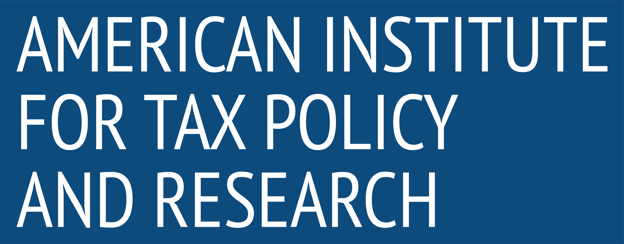AITPR Comprehensive Tax Handbook
Introduction
The tax system is a complex but essential part of economic stability and governance. This handbook serves as a guide to understanding key aspects of taxation, providing insights into tax administration, taxpayer rights, compliance strategies, tax technology, and the future of taxation. Whether you are an individual taxpayer, business owner, or policymaker, this resource will help you navigate the tax landscape with confidence.
1. Taxpayer Rights and Responsibilities
1.1 Understanding Your Rights
Taxpayers have fundamental rights when dealing with tax authorities. These include:
The Right to Be Informed: Access to clear explanations of tax laws and procedures.
The Right to Privacy and Confidentiality: Protection of financial information.
The Right to Challenge the IRS and Be Heard: Opportunity to dispute tax decisions.
The Right to Representation: Ability to hire a tax professional.
The Right to a Fair and Just Tax System: Protection from undue burdens.
1.2 Responsibilities of Taxpayers
Filing Accurate Returns: Ensuring all income is reported correctly.
Meeting Deadlines: Paying taxes on time to avoid penalties.
Maintaining Records: Keeping receipts, tax returns, and relevant documents for at least three to seven years.
2. Tax Administration and Compliance
2.1 Role of the IRS and Other Tax Agencies
The Internal Revenue Service (IRS) and state tax agencies oversee tax collection, enforcement, and policy implementation. Their functions include processing returns, conducting audits, and providing taxpayer assistance.
2.2 Common Tax Compliance Issues
Underreporting Income: Failing to disclose all sources of income.
Overstating Deductions: Claiming more deductions than legally allowed.
Failing to File Taxes: Missing filing deadlines, leading to penalties.
Nonpayment of Taxes: Owing taxes but failing to pay in full.
2.3 Audit Process and What to Expect
Tax audits are conducted to verify the accuracy of tax returns. Audits can be:
Correspondence Audits: Conducted via mail for minor issues.
Office Audits: In-person meetings with IRS representatives.
Field Audits: On-site reviews of financial records.
Random Audits: Selected without suspicion of wrongdoing.
3. Digitalization of Tax Systems
3.1 The Rise of E-Filing and Automation
Electronic filing (e-filing) has made tax compliance more efficient. The IRS Free File program and tax software solutions have streamlined the filing process, reducing errors and processing times.
3.2 Tax Technology and Artificial Intelligence
AI in Tax Compliance: Automation of tax calculations, fraud detection, and risk assessment.
Blockchain in Taxation: Secure and transparent tax transactions.
Big Data Analytics: Enhanced tax compliance monitoring by governments.
3.3 Cybersecurity and Taxpayer Data Protection
With the digitalization of tax filing, protecting taxpayer data is a priority. Measures include:
Multi-factor authentication for e-filing.
IRS Identity Protection PINs (IP PINs).
Encryption and secure online tax payment methods.
4. Tax Planning and Financial Strategies
4.1 Tax-Efficient Investment Strategies
Tax-Advantaged Accounts: Maximizing contributions to IRAs, 401(k)s, and HSAs.
Capital Gains Management: Using tax-loss harvesting to offset investment gains.
Municipal Bonds: Investing in tax-exempt securities.
4.2 Tax Implications of Real Estate
Homeownership Deductions: Mortgage interest and property tax deductions.
Rental Income Taxes: Reporting rental earnings and claiming depreciation.
Real Estate Capital Gains: Strategies to minimize tax liabilities on property sales.
4.3 Tax Strategies for Business Owners
Choosing the Right Business Structure: Tax differences between sole proprietorships, partnerships, LLCs, and corporations.
Deductions and Credits: Maximizing business tax benefits, such as R&D credits and Section 179 deductions.
Employee Benefits Taxation: Offering tax-advantaged benefits like retirement plans and health insurance.
5. The Future of Taxation
5.1 Global Tax Reforms and Digital Economy
The OECD’s Global Minimum Tax and its impact on multinational corporations.
Digital Services Taxes (DST) and taxation of global tech companies.
5.2 Emerging Trends in Tax Policy
Potential carbon taxes and environmental taxation.
Wealth taxes and discussions on taxing ultra-high-net-worth individuals.
The role of artificial intelligence in tax enforcement.
5.3 Adapting to a Changing Tax Landscape
Preparing for new tax regulations and compliance requirements.
Understanding the impact of inflation and economic downturns on tax policy.
Advocating for a tax system that balances revenue generation and economic growth.
Conclusion
Tax policy and administration are constantly evolving. Understanding taxpayer rights, leveraging technology for compliance, and planning effectively can help individuals and businesses navigate the complexities of taxation. As tax laws continue to change, staying informed is key to financial success. The American Institute for Tax Policy and Research remains dedicated to providing expert research, policy analysis, and guidance for a more efficient and fair tax system.


